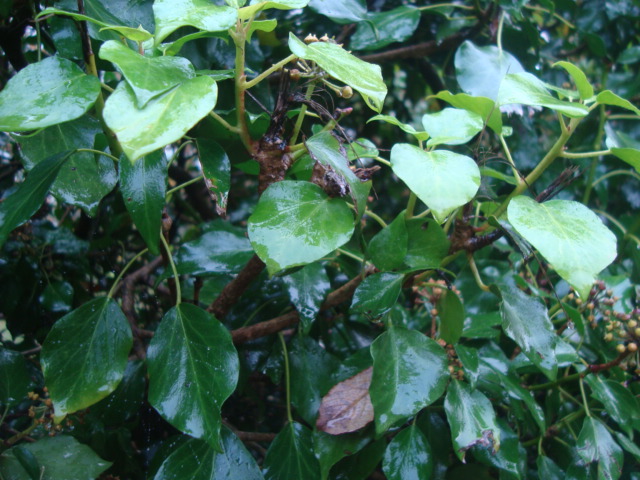De Sadorn, degves warn ügens mis Dû
Saturday, 30th November
En Kernôwek Coth thera an ger “ti” ow menya “house”. Òja an vledhen dewdhek cans po nebes an ger “chi” o ûsyes en Kernôwek Cres. Nei a wel an geryow “ti” ha “chi” en henwyn teleryow. Et agan Kernôwek Bew thera nei ow ûsya “chei” - marnas en henwyn teleryow. Lebmyn ma “ti” (po “Ty”, “Te”, “De”) ow tisqwedhes maner pur goth hag a-bris. Radn anodhans ew complys en Lever Domesday, Tywardreath rag sampel. An scrifores Daphne du Maurier a veu awenys gans an hanow - ha hedna ew merkyes e'n sin vorr (fordh). En Peran Porth thera nei ow perthy co agan maner coth en hanow tavern – Tywarnhayle Inn! Ma maner aral – Trevellance - (saw nag eus "Ty" e'n hanow) ow rei hanow dhe vownder ha nebes treven. En ogas “chi” ew treylyas dhe “gey” en “Bolingey” (Melinjy). Ma melin (treylyas dhe anedhow).
In Old Cornish the word “ti” meant “house”. After the year 1200 approximately the word “chi” was used in Middle Cornish. We see the words “ti” and “chi” in place-names. In our Living Cornish we use “chei” except in place-names. Now “ti” (or “Ty”, “Te”, “De”) indicate a very old and important manor. Some of them are mentioned in the Domesday Book, for example Tywardreath. The writer Daphne du Maurier was inspired by the name – and that is remembered in the road sign. In Perranporth we remember our old manor in a pub name – the Tywarnhayle Inn! Another manor – Trevellance (but there is no "Ty" in the name)- gives a name to a lane and a few houses. Nearby “chi” is mutated to “gey” in “Bolingey” (Millhouse). There is a mill (converted into dwellings).

Deg ger rag hedhyw: Ten words for today
compla to mention
disqwedhes to indicate
hanow name > plural henwyn
merkya to commemorate
maner manor
marnas except
melin or belin (f) mill
perthy co to remember
rag sampel for example
telher/teller place > plural teleryow







































